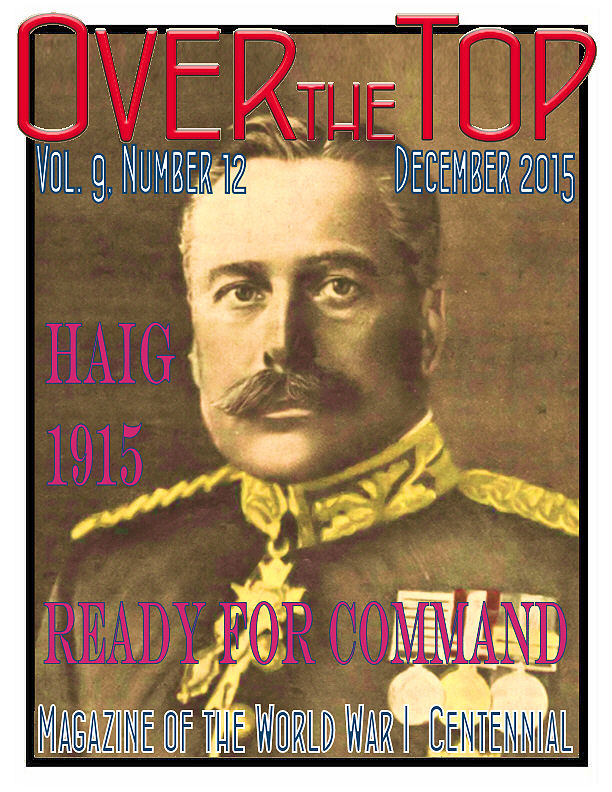
December 2015 |
 |
|
|


Looking Back at the 2015 Centennial Year
The first year of the centennial commemoration of the war was naturally dominated by the July Crisis of 1914 and the opening battles. However, since in 1915 the war took on the character of a "World War" and dramatic events occurred on the seas and in the air, this past year of following the war's 100 anniversaries has been particularly rewarding and enlightening for me. Also, it was a terrific experience to interact with others writing or organizing projects to commemorate the Centennial. None of this likely would have happened without the support and involvement of my great editorial team (in order of seniority): Kimball Worcester, Tony Langley, David Beer, Diane Rooney, and Donna Wagner Below are ten of my fondest personal memories of the past year.
MH
1. Speaking on the war at Cloverdale and Sacramento, CA, and providing weekly Centennial updates on the national conference call of the National WWI Centennial Commission
2. Watching the televised sunrise service from North Beach, Gallipoli, on the 100th anniversary of the landings
3. Learning that the restoration of the Lafayette Escadrille Memorial has been fully funded and will be completed early next year.
4. Receiving permission to republish in our November issue of Over the Top the most powerful article about the Armenian Genocide I've ever read.
5. Helping organize and participating in the Remembrance of the Pershing Family Tragedy at the San Francisco Presidio
6. Being asked by three World War I historians to review their drafts of new, cutting-edge works on the AEF (more on these in future issues of the Trip-Wire)
7. Responding to inquiries about the war from dozens of individuals around the country and, sometimes, from people around the world who have just discovered the United States, curiously, somehow got involved in the Great War.
8. Travelling with two great groups during the year to sites of the forgotten battles of 1915 — like the Yser, Artois, and Champagne — and the battlefields of the AEF.
9. Helping the team organized by the World War I Memorial Inventory Project develop the technology for documenting our memorials. (Don't be surprised if you see me talking about General Pershing's statue someday.)
10. (This is my #1) Seeing the National WWI Memorial in our nation's capital approach reality. Longtime readers know that I have advocated this for years decades. The final design will be selected next month, funds will be raised, and it's going to happen.

|
2016 Events
We will present full information on the international and American World War I commemorations as they become available.
The increased interest in the Great War generated by the Centennial commemorations has led to an explosion of local events and ongoing displays of art and artifacts from the war. The Centennial Commission provides the best list of local, regional, and state-level World War I presentations. Click HERE to view the current list.
|
|
Merry Christmas &
a Happy 2016

Read Our Extended Presentation on
the 1914 Truce at:
(Website); and a Description of a 1915 Truce Below

Playing Star Roles in 1916
Both on the battlefields and on the homefronts new names would become prominent in the war in 1916. Here are biographical sketches of some of these key people.
 General Aleksei Brusilov
General Aleksei Brusilov
 General Erich von Falkenhayn
General Erich von Falkenhayn
 Admiral John Jellicoe
Admiral John Jellicoe
 David Lloyd George
David Lloyd George
 General Robert Nivelle
General Robert Nivelle
 Field Marshal Henri-Philippe Pétain
Field Marshal Henri-Philippe Pétain
 General Henry Rawlinson
General Henry Rawlinson
 Admiral Reinhard Scheer's Memoirs
Admiral Reinhard Scheer's Memoirs

Not Just Vera Brittain

Nurse Amelia Earhart
Don't miss the new movie version of Testament of Youth, the story of the best known VAD nurse from the Great War, Vera Brittain. It has a whopper of a historical error regarding the dates of the Spanish Flu, but these things happen. However, as the photo above shows, it turns out that there is another very well known VAD nurse from the war — none other than aviatrix Amelia Earhart. In 1917 she volunteered to serve at military hospitals in Toronto, serving through the Spanish Flu. During late 1918 she became ill, suffering from pneumonia and maxillary sinusitis. The latter problem led to chronic sinus problems, which affected her flying.

Now it's Christmas for the second time in this war...And here I am alone with my tree in a small trench. Some candles are fixed on the branches and an old steel helmet.
Ernst Bergner, German Army, Flanders, 1915
|

|

U.S. Centennial Organizations & Resources
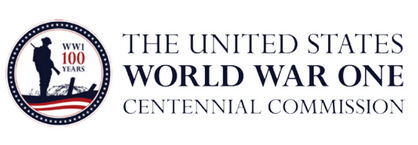
worldwar-1centennial.org/
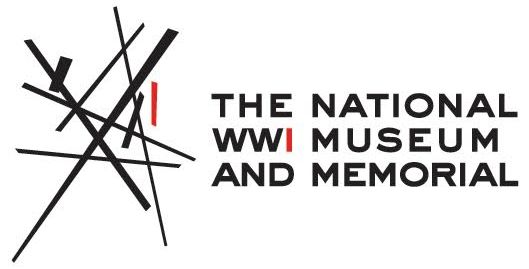
theworldwar.org/
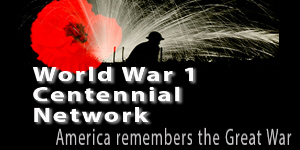
www.ww1-centennial.org/
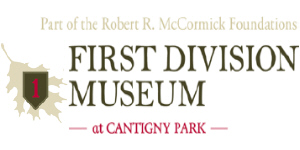
www.firstdivisionmuseum.org/

www.abmc.gov/
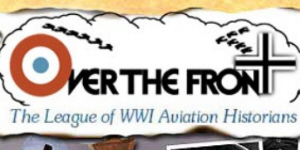
www.overthefront.com/
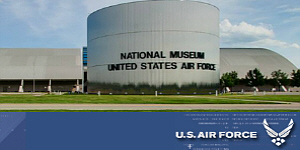
www.nationalmuseum.af.mil/
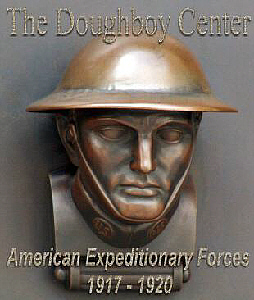
www.worldwar1.com/dbc/
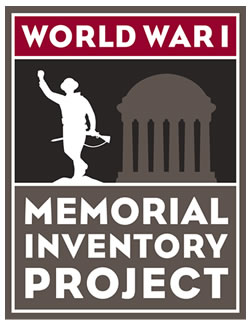
facebook.com/wwiinventory
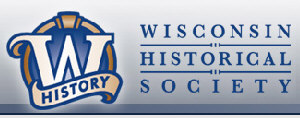
wisconsinhistory.org/
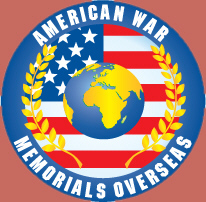
www.uswarmemorials.org/
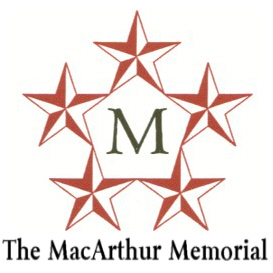
www.macarthurmemorial.org/

www.saving-hallowed-ground.org/
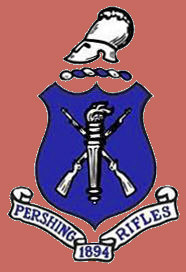
www.theprgroup.org/
Support Worldwar1.com's Centennial Effort
Shop at Amazon.com
|
The Centennial Ticker
French and American Agreement on Centennial Commemorations
Major Events and Cultural, Educational &
Tourism Cooperation Planned
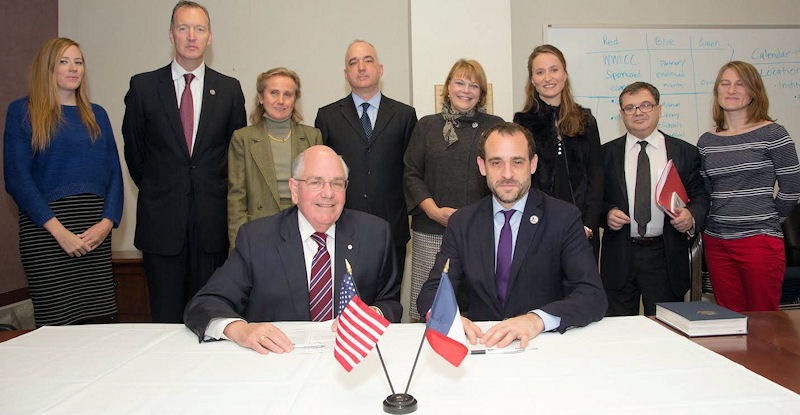
Dan Dayton, WWI Centennial Commission (WW1CC) and Joseph Zimet
Mission du Centenaire 14–18 (MdC) Executed the Agreement.
Joining them, left to right, were: Rebekah Wilson & Chris Isleib, WW1CC, WW1CC Commissioner Monique Seefried, Roger Fisk, WW1CC,
Susan Mennenga, Pritzker Military Museum & Library, Sophie DeVilliers & Christian Thimonier MdC Staff, and Marie-Amelie Lebeau, WW1CC
On Thursday 19 November in a ceremony at its Washington offices, the U.S. World War One Centennial Commission signed a partnership of mutual support with France’s Mission Du Centenaire 14–18. Mission Du Centenaire is the official government agency in France set up to provide public education and commemoration for the war and is the counterpart to the U.S commission. The agreement was signed by Commission Executive Director Dan Dayton and Mission Du Centenaire Director General Joseph Zimet.
The agreement calls for the two organizations to share their experience, knowledge, and technical means as they prepare for the commemoration of the American intervention in World War One. Specifically, it identifies four areas for particular cooperation: 1) the identification and planning of the main events, 2) communication, digital and cultural cooperation, 3) education, and 4) remembrance tourism.
The tentative list of joint future programs in France includes:
20 APR 2016: Re-dedication of the Lafayette Escadrille Memorial, Paris
6 APR 2017: Commemoration of 100th anniversary of U.S. entry into World War I Events at U.S. Embassies in Europe
July 1917: Commemoration of 100th anniversary of General Pershing’s visit to Lafayette’s Tomb, Paris, and
2018: a major series of events commemorating the Battle of the AEF
|
The nation that forgets its defenders will itself be forgotten — President Calvin Coolidge
Americans Have Not Forgotten
Veterans (and Armistice) Day 2015

Details from Top
- The U.S. Navy Carries the Flag, New York City
- WWI Reenactors, National WWI Museum, Kansas City; Honoring WWI Veteran Wagoner Ambrst Hoyle, 30th Division, at the U.S. Somme Cemetery, Bony, France; U.S. Military Dependent Saluting the Flag, Seoul, Korea
- Audience for Wreath-Laying Ceremony, Arlington National Cemetery
- Personal Remembrance, Georgia National Cemetery; Civil War Reenactors, Richmond, ME.
- U.S. Marines, Pittsburgh, PA
- Parade Participants, Leavenworth County, KS; Los Angeles Memorial Coliseum WWI Remembrance, USMC and National WWI Commission Representatives
- Americans on Parade, Montgomery, AL
|
|
|

Christmas Truce + 1
December 1915
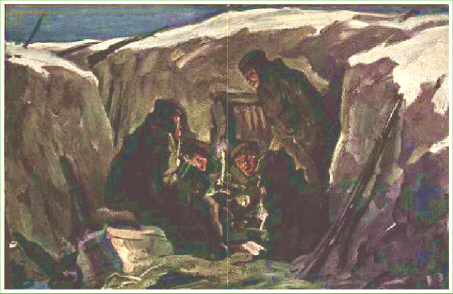
German Trench, Christmas Time, 1915
The 1914 Truce had one traumatic impact – it horrified the generals and their staffs on both sides, and they worked hard subsequently at discouraging such fraternizations. However, there were more incidents in 1915 [albeit smaller in scale] one of which was near Fromelles. Lt. Wilfred Ewart of the Scots Guards described it in his memoir, Scots Guards.
It is Christmas morning. As I gaze over the parapet on the drab landscape before me, every feature, every rise or fall in the ground, every knoll, every hideous skeleton of shattered buildings, almost every tree, has its story, so consecrated forever to the memory of the English race is the Aubers Ridge opposite. . . In the foreground is a village absolutely shattered. It is scarcely possible to see the brown roofs, the stark walls, and varicolored ruins amid the trees. [A] stream runs down the middle of No Man's Land. . . And here our men meet the Germans.
So soon as it grows light this morning we start peeping at each other over the top of the parapet. . . calling across to each other. And presently, at about 7.50, a German stands up openly on the parapet and waves his arms. He is followed by two in field-grey overcoats and pillbox caps. Then they come out all down the line, stand up on the parapet, wave, shout, and finally swarm forth from their trenches on either side. . .
And so the grey and khaki figures surge towards each other as one man. . . They pat each other on the shoulder and laugh like schoolboys, and leap across the little stream for fun. And when an Englishman falls in and a Boche helps him out there is a shout of laughter that echoes back to the trenches. . . We shout" Hullo, Fritz' " "Good morning, Fritz!" " Merry Christmas'" "Happy Christmas", " How's your father? " " Come over and call", "Come and have breakfast," and the like, amid roars of laughter. Even confidences are exchanged in broken English.
So for ten brief – all too brief – minutes there is peace and goodwill among the trenches on Christmas Day. Then from the trenches of the Ninety-fifth Bavarian Reserve Infantry Regiment two officers in black accoutrements and shiny field-boots come out, wishing to take photographs of our Tommies, and offering them cigars. Their request is refused; and presently they say: "You will have five minutes to get back to your trenches before our artillery will open fire. "And it does. And two or three men are wounded almost at once. But for twenty-four hours not a shot is fired, on either side.
|
|

Announcing Our 2016 Centennial Battlefield Tour Schedule
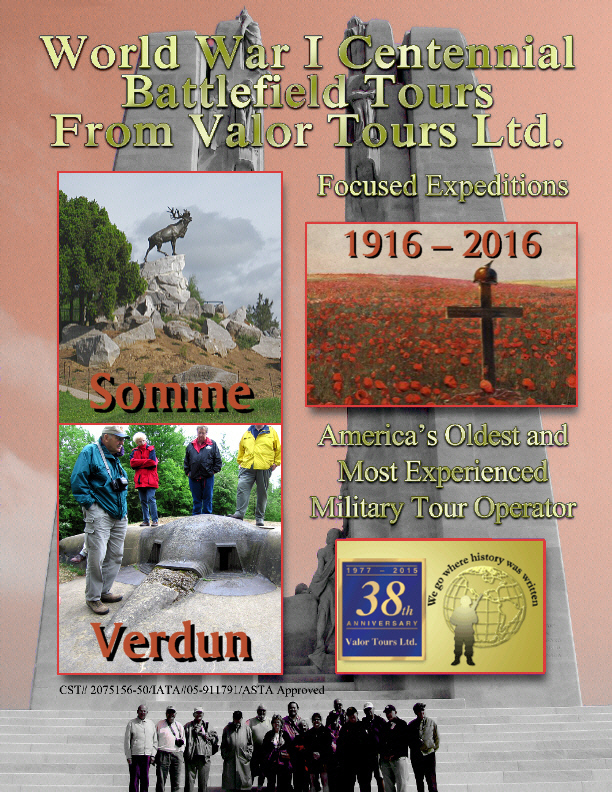
Room Still Available on Both of Our 2016 Tours
2 - 10 May 2016: Verdun In-Depth
Includes Key Sites on the Argonne, St. Mihiel Flanks and the Voie Sacrée
14 - 21 August 2016: The Somme In-Depth
10% off ($320) if you pay by 2 February 2016, 5% if you send your deposit by that date
The full brochure covering both trips and registration details can now be downloaded at:
(http://www.worldwar1.com/pdf/ValorTours_2016Flyer.pdf)
|
|
|

|

This Month's Recommended Christmas Gifts —
Books and Videos for Young Persons
Here are four works that can help introduce children to the events and traditions of the war, and also gently draw their attention to learning about the past.
Of course, the Christmas Truce of 1914 is the most seasonal of the subjects and that is well-covered in Christmas in the Trenches, which includes a CD with soldiers singing carols. Two of the great cartoon characters, Winnie the Pooh and Snoopy, are connected to the war in different ways. In Flander's Fields discusses the origins of the famous poem and how the red poppy became the symbol of the Great War.
|
Reload page if any book covers fail to appear.
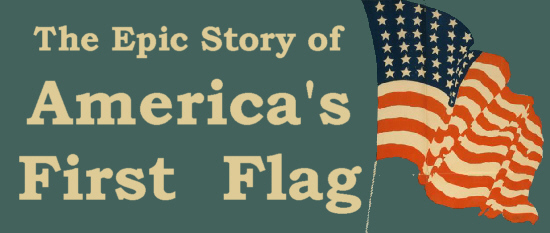
Part II: Arrival on the Western Front
By Patrick Gregory
|
The First Stanford Unit had been serving on the front for nearly three months when the flag arrived in France. The Californian students were but the latest in a long line of young men — with Ivy League colleges heavily represented — to have heeded the call to serve as ambulance drivers from the opening weeks of the war in 1914. One of the first major encounters of the war, the first Battle of the Marne in September 1914, had acted as an early recruiting sergeant as young volunteers began to find their way to France, first in ones and twos and then in groups, determined to do their bit for an Allied cause with which many came to identify.
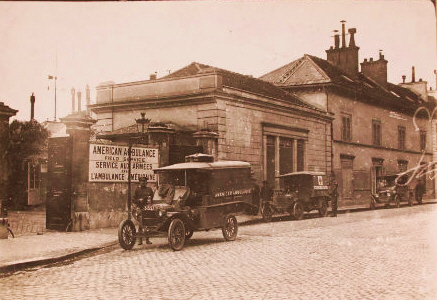
SSU 14 (Stanford Section) Ambulances in Paris
A number of ambulance groupings had begun to emerge through the tail end of 1914 into 1915, the Harjes Formation — named after the senior partner of the Morgan-Harjes Bank in Paris, Herman Harjes — and the second, Richard Norton's Anglo-American corps. These developed separately and worked as distinct units for over a year, before eventually merging under the banner of the American Red Cross. But it was a third ambulance grouping which grew out of the American Military Hospital in Paris which would grow into the largest and best organized: the American Ambulance Field Service or later simply "American Field Service," and it was it which the Stanford students had come to join.
The volunteers had arrived in the field in mid-March, forming the backbone of what was now officially classified as SSU 14 — Section Sanitaire Etats-Unis 14 — assigned, as was the practice, to an individual division of the French army. In the case of the Stanford unit it had been given the task of looking after the 55th French Infantry Division — battle-weary veterans of the Marne and First Battle of the Aisne, soldiers who had fought through campaigns in the Artois sector and around Verdun. The volunteers' job was to evacuate the division's wounded during fighting from frontline emergency postes de secours dressing stations, transporting them for treatment to the rear of the lines.
Since April the French troops had been aware that their new ambulancier colleagues were officially at war as well, and so, to mark the United States' status as an "associate" of the Allies, the flag carried to France by their fellow Stanford student — the first official flag of the American government to be flown at the front — was now to be presented by their division.
Accordingly, two regiments of the 55th assembled with the Stanford men on the morning of Monday 4 June. It was 9 o'clock, a clear sunny day, the setting a field outside the village of Tréveray in the Meuse department some 50 miles south of Verdun. "The field of review was on the top of a high hill overlooking the valley and village," recalled Kimber, "and with a wonderful view in all directions. As we approached we could see company after company of French soldiers maneuvering into position. They all wore the steel helmets and had bayonets in place. [A divisional commander] Colonel Collon, reviewed the troops, riding up and down the lines in front of them."
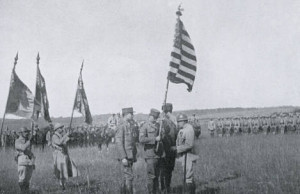
First American Flag to the Battlefields Presented
Once assembled, three of the Stanford group, a color party, stepped forward. Behind them French flags and standards flew, tended by their own guards of honor. Ranked behind them a regimental band and the rest of the Stanford men, regiments of French troops either side of them. Across the field Clifford Kimber began a short address, one which included a statement he had had brought to read from the Secretary of War Newton Baker. After he was finished Kimber handed the flag over to the colonel to make the formal presentation. Collon now addressed the assembly, this time in French, before handing the flag over to the Stanford color party. With the ceremony complete, the regimental band struck up the "Star Spangled Banner", the American anthem quickly followed by a rousing chorus of the "Marseillaise".
This 4 June wasn't the only ceremony involving the flag, however. Exactly a month later — mindful of the significance of the day in the American calendar and wanting to mark the work of Section 14 — four companies of French soldiers, veterans of recent fighting around Téton in the Champagne region's so-called "Battle of the Hills", assembled to award the unit with a number of Croix de Guerre. One medal was pinned to the flag and two others awarded to individuals in the unit: one to the French-American member of the unit, Pierre "Peter" Fischoff, who had worked in the ambulance service since 1915, the other to the section head, Allan Muhr. A ceremony followed by what even for peacetime would have been considered a lavish feast, a ten-course meal, accompanied by table wine and large quantities of the fizzy wine which gave the area its name.
The section continued in its original guise until the latter part of September 1917. At that point the American Field Service and other volunteer units were taken over by American Expeditionary Force and its U.S. Army Ambulance Service. The old S.S.U. 14 now became the new Army Ambulance's "Section 632," yet by that time many of the original members of the First Stanford had left to go into other branches of service or theatres. Some had elected to join a second wave of Stanford volunteers on ambulance duty in the Balkans while others went into aviation and others branches of service. Two of those in aviation, Kimber himself with U.S. 22nd Aero Squadron, and Alan Nichols who had joined one of the French Foreign Legion squadrons of the Lafayette Flying Corps would lose their lives, killed in action in the summer and autumn of 1918.
But the flag did find its way safely back to America. Two of the original members of the Stanford section who had set off from California in February 1917 brought it back there in 1918. Walter Malm, who had served as the unit's sous-chef, and Harold Blote, who worked both in France and the Balkans, carried it back to the university where it was placed in Stanford's chapel. In time the flag bore not only the Croix de Guerre awarded in the summer of 1917, but also battle ribbons which showed the later service in war of the different Stanford units in France: action around the Aisne and Marne in 1917 and 1918 and the postwar occupation of the Alsace region up until March 1919.
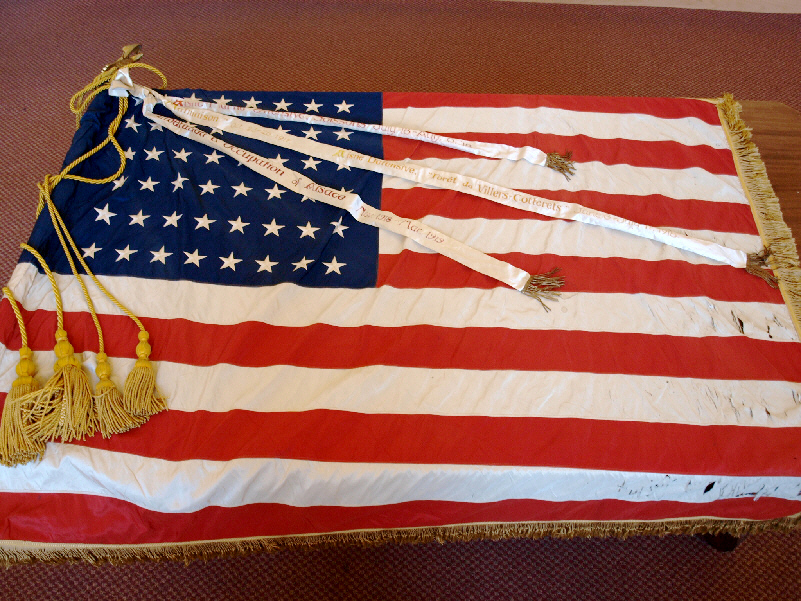
The First Flag Today with Streamers
The First Flag still exists and remains at Stanford. It hung in the Stanford chapel until the early 1970s, but since that time has been stored safe — albeit not on public display —in the institution's Special Collections & University Archives department.
To be continued. . .
© Patrick Gregory 2015
Adapted from the forthcoming An American on the Western Front: The Letters of Arthur Clifford Kimber, Patrick Gregory & Elizabeth Nurser (The History Press, UK, June 2016)
|
|
|
Thanks to each and every one of you who has contributed material for this issue. Until our next issue, your editor, Mike Hanlon. |
|
 (Or send it to a friend)
(Or send it to a friend)
|
Design by Shannon Niel
Content © Michael E. Hanlon
|
|
|









